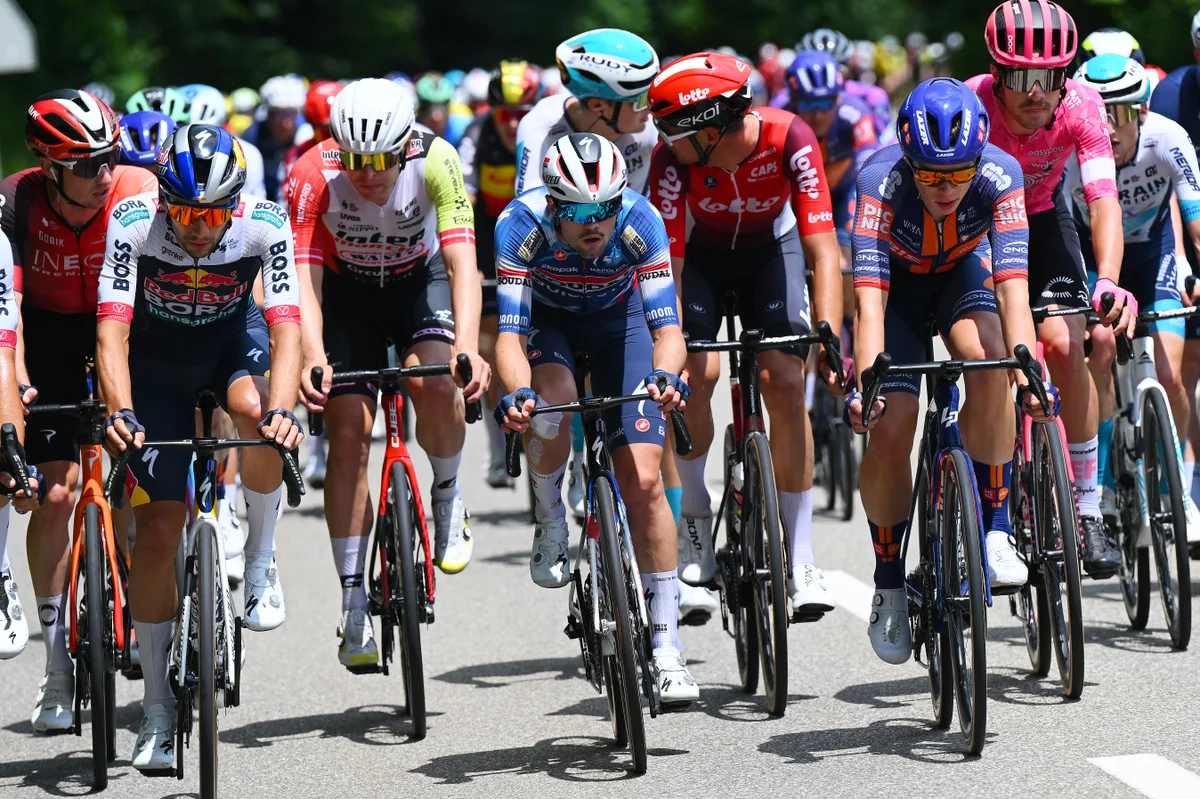By Flo Clifford
A new addition to the cycling rulebook may add to the drama at this year’s Tour de France.
Cycling’s governing body, the Union Cycliste Internationale (UCI), has recently introduced a new yellow card system to crack down on reckless or dangerous behaviour in races.
The system was trialled last season and has been integrated at World Tour (the top level) and Pro level races throughout this season, with the 2025 Tour the first to see it in action.
Race commissaires – officials operating at the Tour and other races – can issue these yellow cards “whenever the behaviour concerned is susceptible of causing a risk for safety”, according to the UCI rulebook.
A list of behaviour that may earn a yellow card includes a “sticky bottle” – holding onto a team car for too long while taking on food – or taking sustenance outside a designated feed zone; sheltering in the slipstream of a race vehicle; assaulting or intimidating a fellow rider or spectator; and irregular sprinting.
That covers deviating from your chosen line coming into a sprint, which could obstruct or endanger other riders. Mark Cavendish’s history-making 35th stage win at the Tour de France, when he swung left across the road into empty space, may well have been hit with a yellow card for deviating from his line, were the regulations in place last summer.
A new addition to the rulebook is most relevant to lead-out riders during a sprint: “decelerating during a sprint and endangering other riders”, i.e. riders pulling off having completed a lead-out and blocking the road or forcing other riders to go round them.
There have been 159 yellow cards issued so far this season, and the UCI notes that the minority have been doled out to riders – 42%.
“Team staff (including mechanics and Sport Directors) account for 37% of yellow card issued, media/TV representatives (15%) and other motorbikes (6%),” it says, with unsafe driving by team cars, unsafe behaviour of staff in feed zones – handing out food and drink to riders – in particular warranting yellows.
For riders, the most common cause of a yellow card has been irregular or dangerous behaviour in sprints, and that’s where we’re most likely to see any possible yellows at the Tour.
Unlike in, say, football, riders won’t be brandished with a physical yellow card at the time of the offence – there will be no referees on wheels keeping tabs on the peloton.
Instead, the yellow card offences will be published in race communiques after the race, as is common, where riders, teams and support staff are frequently hit with fines or other sanctions for breaking UCI rules.
Yellow cards may be handed out either as punishment on their own or in addition to any fines, relegation in race results, or time penalties awarded.
Significantly, two yellow cards within 30 days warrant disqualification from the race and suspension for seven days. Three yellows in 30 days will result in a 14-day suspension.
This could be huge during the Tour; a rider who receives a yellow for obstructing another’s sprint on day one in Lille will endure a nervous rest of their race.
So far one rider has been suspended, Alpecin-Deceuninck’s Oscar Riesebeek, who was given two yellows in three days in May.
While the system has been put in place to ensure rider safety, there have occasionally been moments where it has come under fire for race commissaires over-policing behaviour, and there’s an element of subjectivity to it too.
When is jostling for position in a sprint part and parcel of bike racing, and when does it veer into dangerous or reckless territory? Certain officials will have different ideas.
So far this season we’ve seen riders penalised for sitting up and celebrating teammates’ wins during a sprint – the rulebook explicitly covers “celebrating in the bunch, or taking hands off handlebars while in the bunch” – so there’s certainly potential for controversy when the system makes its Tour debut.
